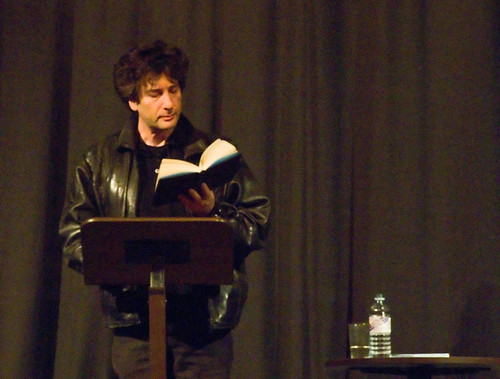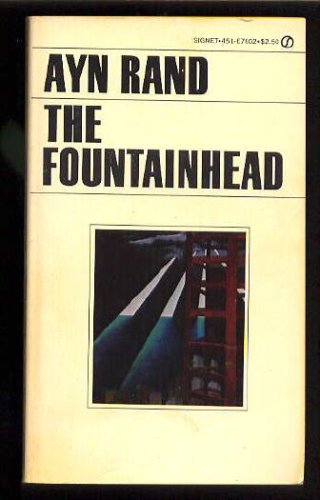 Source: http://farm4.static.flickr.com/3192/2982122055_91d6088f9a.jpg
Source: http://farm4.static.flickr.com/3192/2982122055_91d6088f9a.jpgI learned several important lessons from hearing Neil Gaiman read The Graveyard Book online before the book came out. First off, an author's voice should reflect the tone of the story, and facial expressions help. (Neil Gaiman can look scary as the Man Jack.)
Neil Gaiman didn't teach me one important lesson, though: if readers like how your story sounds, if it's poetic or entertaining, they will keep reading even if they have no idea what's going on. His stories are fortunately clear, affable, and intriguing. No, I'm talking about an Ayn Rand novel about the individual and creative endurance.

Source: http://ecx.images-amazon.com/images/I/41g3GWJ%2BhdL.jpg
I started reading The Fountainhead on a Parisian train before my brother asked for it (he had brought it, not me, for the record). I started again in my junior year of high school, and though I didn't get the parts that I liked most in the book, I kept reading them. Case in point: Dominique Francon. I didn't get why she kept trying to destroy the protagonist Howard Roark if she was in love with him. I didn't get it for two years, but I liked Dominique's voice and reread her conversations with Howard. And then I got it.
Not all of us will write clear books; clarity is my current problem. However, if a reader likes what we wrote, they will treat it like a beautiful abstraction

Source: http://artmiser.files.wordpress.com/2007/02/30pollock_lg.jpg
and then put the pieces together.
The key word is beauty. If you write a gory psychothriller, infuse it with beauty. If you write a comedic approach to war, make the images enthralling. Even if you write a nonfiction horror story, you need beauty. Know what impact your words have on the listener; study the sounds of a connotation. Make your reader laugh and cry, but also make sure they keep the book open for those moments.
